Abstract
The effect of various concentrations of sodium thioglycollate (0-0·05%) on the recovery of spores of four strains of clostridia was investigated. The results showed that thioglycollate at a concentration of 0·01% can be inhibitory to some clostridia. However, the results also indicated that the inhibitory effect is dependent upon the composition of the growth medium. The presence of glucose appeared to be particularly important in reducing the inhibitory effect. These findings support the view that the use of sodium thioglycollate in sterility test media should be discontinued.
Full text
PDF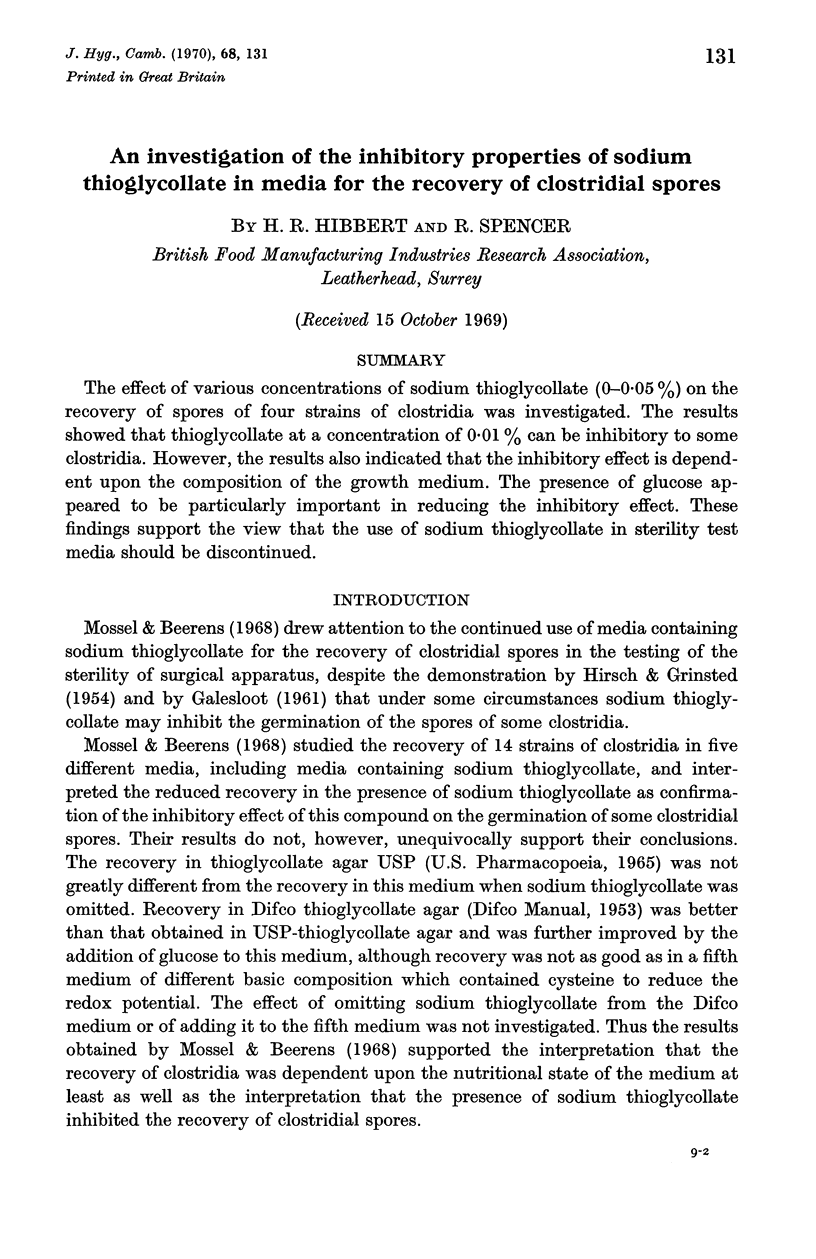
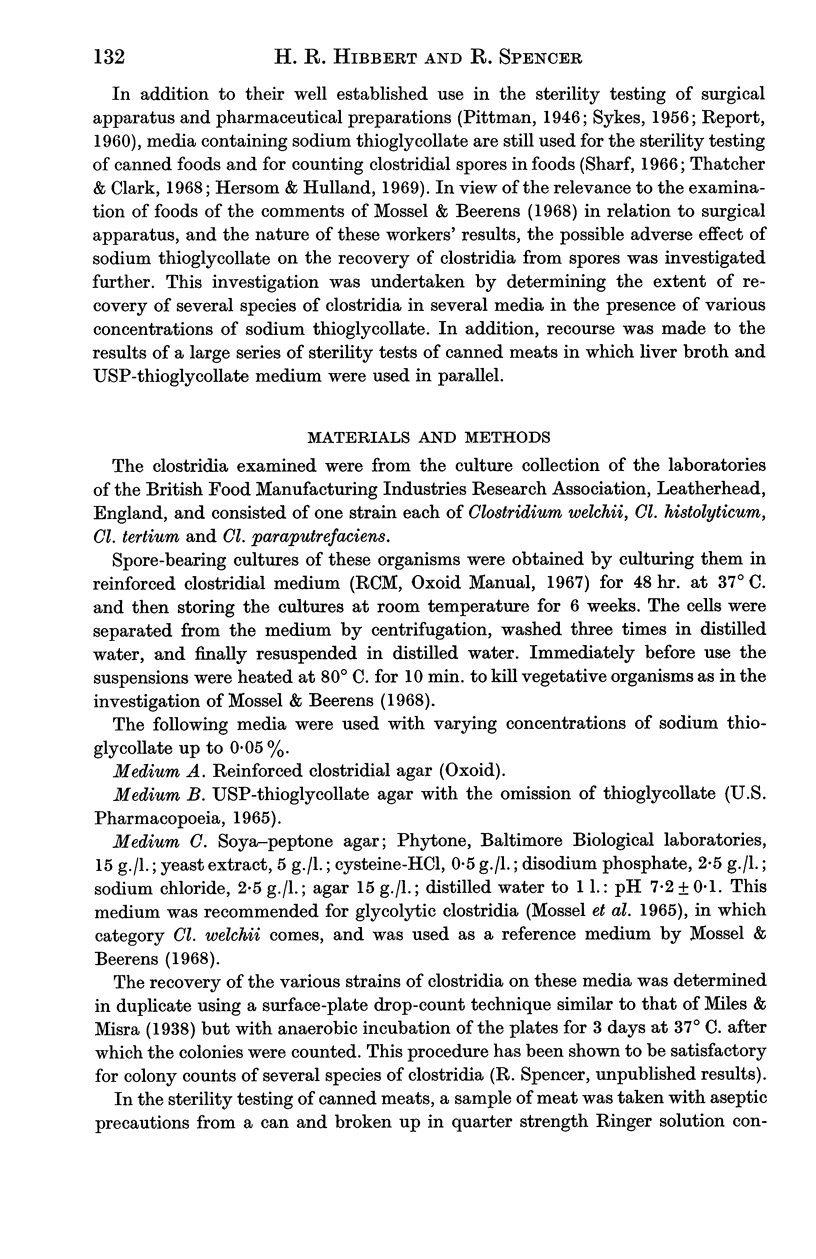
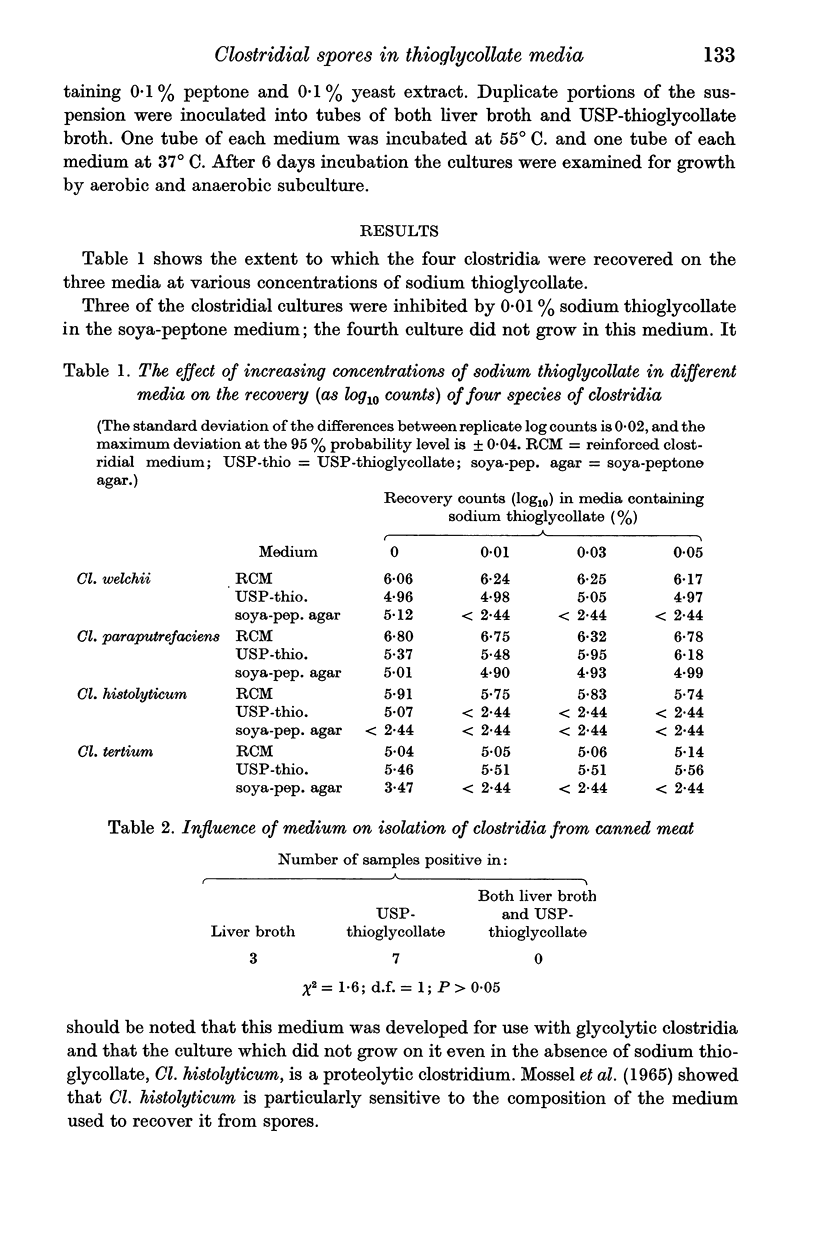
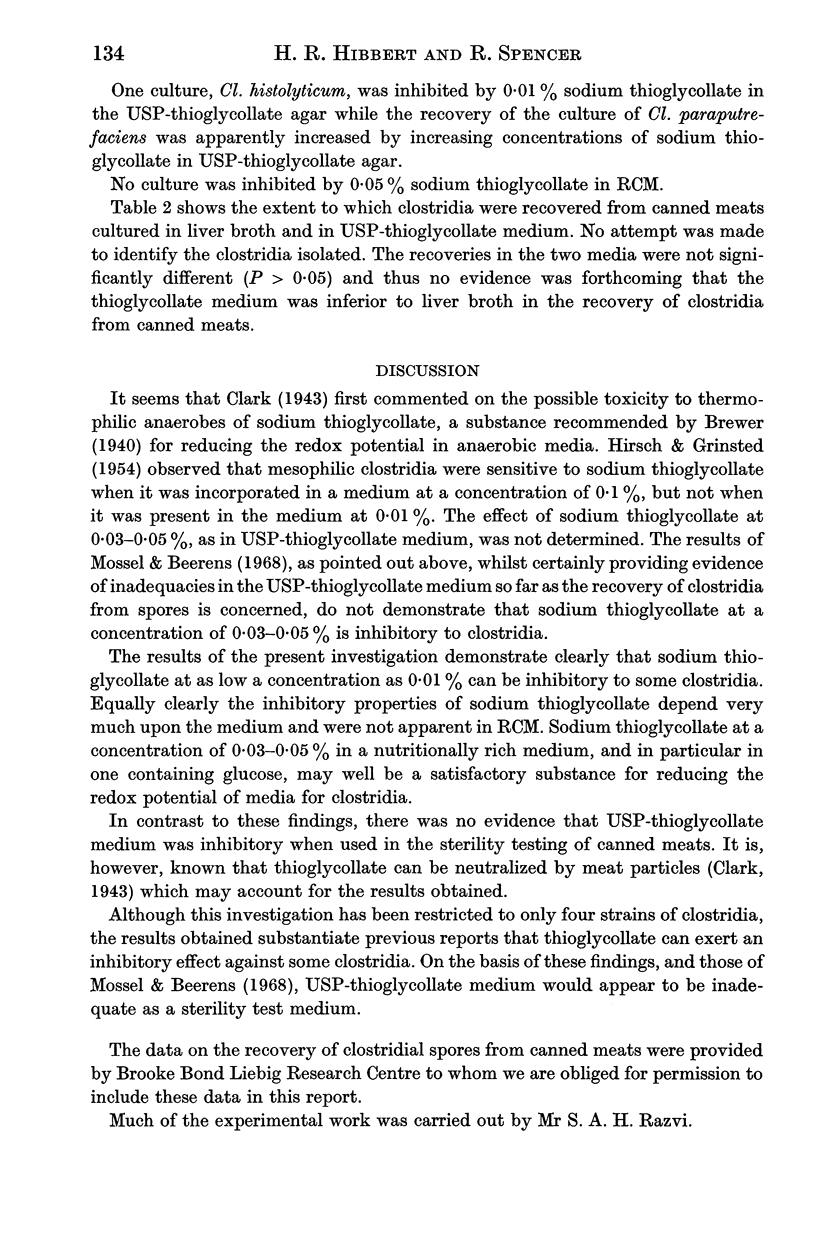
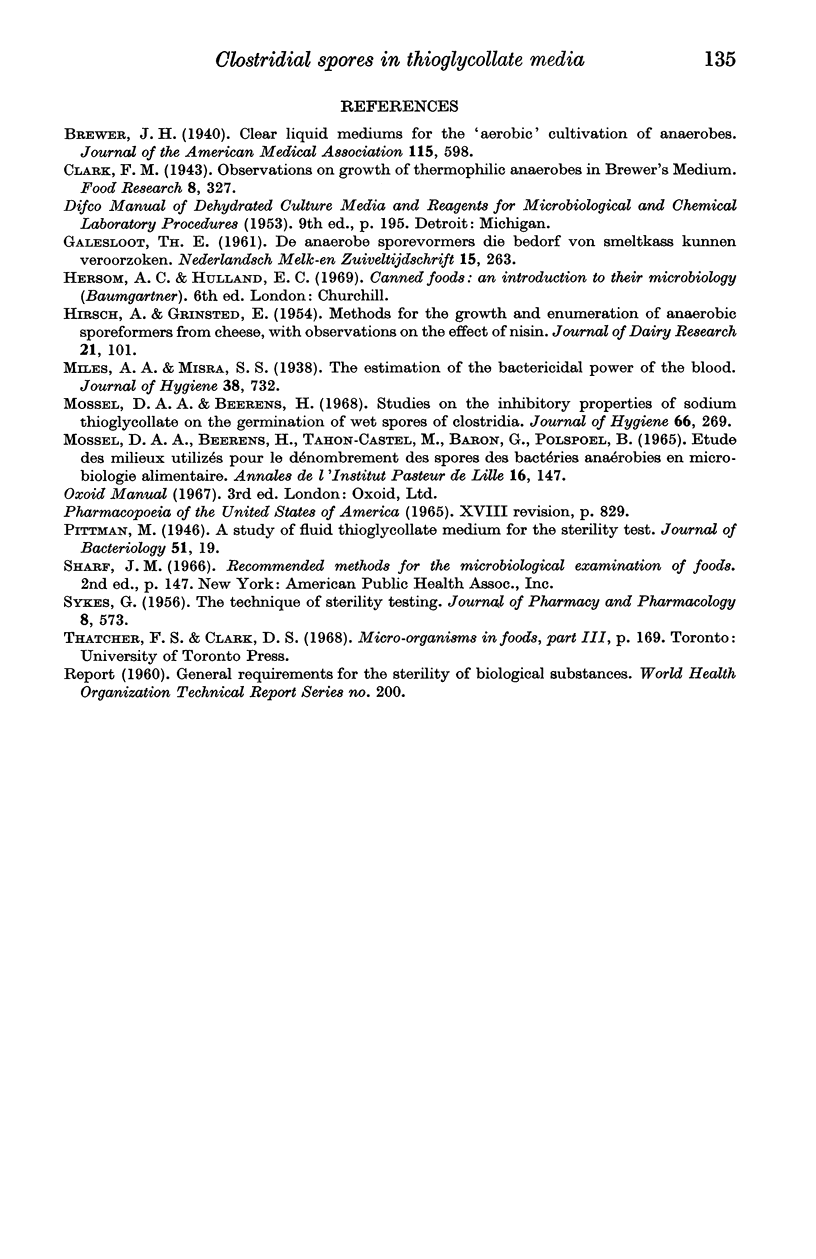
Selected References
These references are in PubMed. This may not be the complete list of references from this article.
- Mossel D. A., Beerens H. Studies on the inhibitory properties of sodium thioglycollate on the germination of wet spores of clostridia. J Hyg (Lond) 1968 Jun;66(2):269–272. doi: 10.1017/s0022172400041127. [DOI] [PMC free article] [PubMed] [Google Scholar]
- Mossel D. A., Beerens H., Tahon-Castel, Baron G., Polspoel B. Etude des milieux utilisés pour le dénombrement des spores des bactéries anaérobies en microbiologie alimentaire. Ann Inst Pasteur Lille. 1965;16:147–156. [PubMed] [Google Scholar]
- Pittman M. A Study of Fluid Thioglycollate Medium for the Sterility Test. J Bacteriol. 1946 Jan;51(1):19–32. [PMC free article] [PubMed] [Google Scholar]
- SYKES G. The technique of sterility testing. J Pharm Pharmacol. 1956 Aug;8(8):573–588. doi: 10.1111/j.2042-7158.1956.tb12189.x. [DOI] [PubMed] [Google Scholar]


